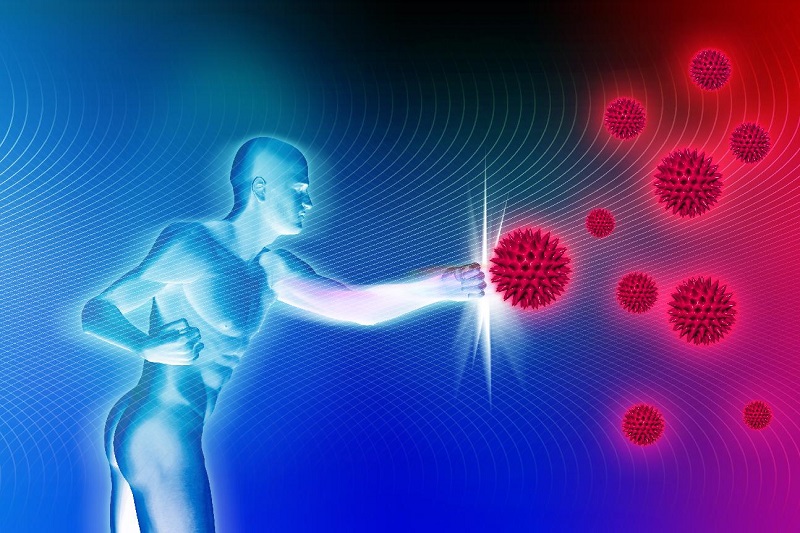For the first time, the world learned about the presence of C-reactive protein (CRP) in the blood only in the last century, so its properties are still being actively studied. This protein is a complex substance in its structure, since carbohydrates and proteins are combined in it. Produced only by the liver. In a healthy person, the amount of protein is minimal, so during the diagnosis it may not be detected. The amount of reactive protein in the blood increases due to various factors that carry a potential danger.
This substance received such a name because of the ability to react with the C-polysaccharide of pneumococci. This reaction is called precipitation, because it personifies the body's defense against infections even at the initial stage of the development of the disease.
CRP is considered a highly sensitive substance. It is more difficult to calculate its concentration than the erythrocyte sedimentation rate (ESR). The norm of this protein is separately calculated only for newborns.
C-reactive protein cell
For such tiny patients, the norm should not exceed 15 mg / l. For adult men, women and children, the upper limit is 5 mg / l. The indicator is increased if it is more than 10 mg / l. Determining the concentration of this substance in the laboratory often does not have any specific result. This happens for one reason - the laboratory equipment is not able to detect the slightest content of reactive protein in the blood, but this does not mean that it does not exist.
Important! If sepsis is suspected, neonatologists begin antibiotic therapy already at the moment when this blood indicator rises to 12 mg/l. Sometimes, immediately after birth, a bacterial infection may not cause a dramatic increase in protein.
Elevated C-reactive protein in the blood can develop due to any inflammatory process and as a result of tissue destruction.
Read also: and deviations, causes and methods for correcting the results
Reasons for the increase
When CRP is elevated, doctors can immediately determine the degree of development of the disease. With the help of this analysis, they are able to formulate a presumptive prognosis of the disease and the effectiveness of the prescribed treatment. Sometimes inflammatory processes occur without clear symptoms, so this blood indicator is quite informative in diagnosis:
- active phase of rheumatism;
- acute allergies;
- diseases of the cardiovascular system;
- diabetes;
- hypertension;
- renal and hepatic insufficiency;
- pre-infarction conditions and strokes;
- inflammatory processes resulting from surgery, shunting, angioplasty;
- neoplasms and metastasis;
- autoimmune diseases;
- the effectiveness of the prescribed therapy;
- infectious diseases;
- pregnancy.
To better understand the full effectiveness of this analysis, you need to answer the question of what functions SRP performs.
What does the SRB show?
This protein is ultra-sensitive, because it begins to be produced only after the appearance of an inflammatory process in the body. The more intense the pathological process, the higher the indicators of this substance. The SRB is responsible for:
- increasing the immune defense of the body;
- increased activity of leukocytes;
- detection and activation of the complement system;
- acceleration of the production of interleukins;
- acceleration of phagocytosis.
In simple terms, C-reactive protein takes part in all the reactions of the immune system that fight potential pests in the body.
 immune protection
immune protection If the patient's tests showed an increase in this indicator, this means that an inflammatory process is taking place in the body.
This substance is called a non-specific blood indicator, since this protein has a high sensitivity to any damage to the integrity of the tissue. It is often compared to ESR.
Important! CRP may increase as early as 4 hours after infection. Already at the stage of active inflammation, its level exceeds normal up to 20 times.
How to prepare for analysis
When the reactive protein is elevated, the doctor can confidently determine the stage of the disease. In order for the results of a blood test for biochemistry to be as truthful as possible, the patient is recommended to adhere to certain rules:
- donate blood on an empty stomach before 11 o'clock in the afternoon;
- 12 hours before sampling, do not drink alcoholic beverages, energy drinks, do not eat fatty and overly spicy foods;
- you can only drink water;
- do not smoke 3 hours before the procedure;
- 1-2 days before blood sampling, refuse active physical exertion;
- minimize the stress factor;
- if the analysis is given in the evening, then you can allow a light breakfast, but without coffee and strong tea.
These are the rules that are the same for everyone. If the patient is taking antibacterial drugs, then the laboratory assistant and the doctor should be warned about this even before the stage of blood donation.
Common reasons for the increase
Doctors have identified three groups of causes that can provoke an increase in CRP. C-reactive protein is normal in adults and children as long as it does not exceed 5 mg/l. If the amount of this substance is higher than normal, this means that the doctor needs to look for the cause of the inflammation. Reason groups:
- The CRP index is above 100 mg / l. Such a high value of reactive protein is observed in the course of bacterial infections: microbial pneumonia, pyelonephritis, salmonellosis.
- The indicator is up to 50 mg / l. This value often accompanies viral diseases: mononucleosis, herpes, rotovirus infection.
- The indicator is up to 19 mg / l. A similar result of the analysis indicates a relatively low excess of the norm, but this condition can be with any pathology.
It is impossible to speak with a high degree of probability about the development of a particular disease, since CRP is an approximate indicator. In different people, it can vary significantly even in the presence of the same disease. For example, in a person who has arthritis, this blood parameter may be higher than 100 mg/l, and in a person with advanced sepsis, it may not exceed 5 mg/l. During the appointment of treatment therapy, the doctor should rely not only on this indicator. It is advisable to conduct a detailed biochemical blood test with the obligatory determination of ESR.
Why does C-reactive protein increase in women?
Increased CRP levels are most commonly seen in females between the ages of 30 and 60. It is this analysis that allows you to exclude the development of the following pathologies:
- Gynecological diseases. An increase in the rate occurs with endometriosis, cervical erosion, cervicitis, endometritis.
- Oncological diseases. Women aged 40-60 are at risk. Most often during this period, breast cancer and cervical cancer are diagnosed.
- Chronic diseases. A woman for a long time may not know about the course, for example, of chronic inflammation of the genital organs.
Advice! In order to diagnose the disease in time, you need to undergo an examination by a gynecologist at least once a year. If previously there were any pathologies, then for prevention it is better to visit a doctor twice a year.
Most often, women are exposed to infections of the genitourinary system (cystitis, chlamydia, mycoplasmosis, candidiasis). In second place are diseases of the gastrointestinal tract. Most often, CRP increases due to cholecystitis, pancreatitis, and dysbacteriosis.
Why does C-reactive protein increase in men?
This indicator rises more often in middle-aged and older men. The reason for this can be oncological diseases and inflammatory processes:
- respiratory tract;
- urinary tract.
All this means that C-reactive protein is a kind of marker by which one can determine the degree of neglect of the disease. By its quantity, you can see how long the disease has been in a latent form.
 Unhealthy Lifestyle
Unhealthy Lifestyle Initially, an unhealthy lifestyle, unhealthy diet, hard physical work, radiation, smoking, alcohol abuse, and stress can affect the increase in CRP in males. It is possible to reduce C-reactive protein in the blood with early diagnosis of the disease on the 6-8th day of treatment. Of course, we are talking about diseases caused by a bacterial infection.
CRP in children
Decreased immunity is one of the most common problems of the child's body. Especially often this process is manifested in children of primary and school age. Doctors consider the period of 7-10 years to be one of the most "active" in terms of infection of the child's body. Usually, the health of babies at this age is affected by infections of the gastrointestinal tract and respiratory tract.
Acute infections that can increase CRP:
- dysbacteriosis;
- dysentery;
- SARS;
- flu;
- pneumonia;
- salmonellosis;
- bronchitis;
- tonsillitis;
- laryngitis;
- sinusitis;
- sinusitis;
- gastritis.
Treatment of all these diseases will be most effective if the diagnosis is carried out at an early stage of the development of the inflammatory process.
How C-reactive protein affects the development of cardiovascular disease
The discovery of a dense relationship between a high CRP rate and the development of cardiovascular pathologies has become quite fresh. This protein is able to provoke the development of vascular atherosclerosis, which is important for people with existing heart disease.
If in patients with diseases of the heart and blood vessels, CRP rises to 4 mg / l, then this indicates a high probability of vascular damage. On the contrary, a lower indicator makes it possible to talk about the successful treatment of the disease.
The protein responsible for the level of the inflammatory process is able to determine:
- hypertension;
- vascular atherosclerosis;
- anemia
- arrhythmia;
- tachycardia;
- angina.
If CRP in the blood is elevated, then people with:
- overweight;
- frequent jumps in blood pressure;
- an increase in low-density lipids in the blood;
- an increase in blood sugars.
Smoking, excessive consumption of alcoholic beverages, minimal physical activity, and frequent stress can further aggravate the situation.
Now we know what a reactive protein is and what functions it performs in the body. With the help of this substance, it is easier for doctors to determine the cause of the disease, the prognosis of its development and the effectiveness of treatment.


